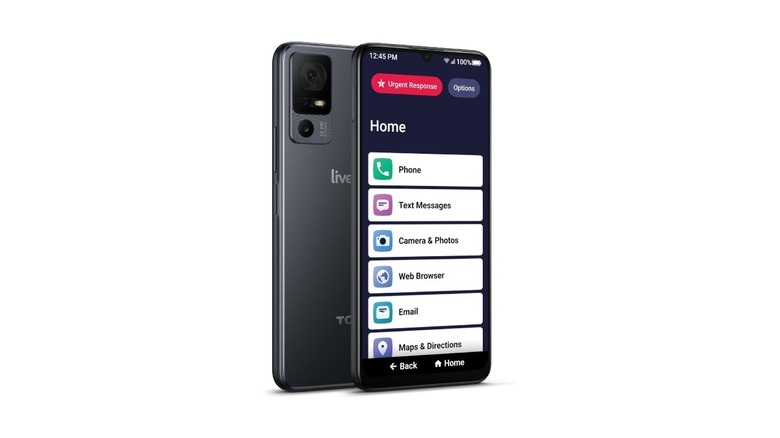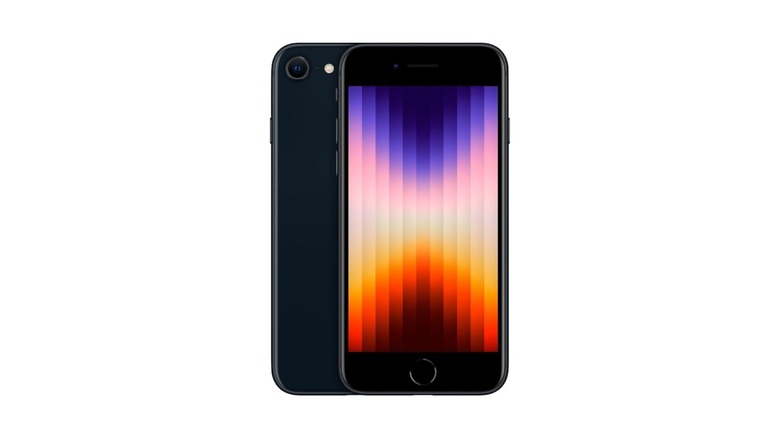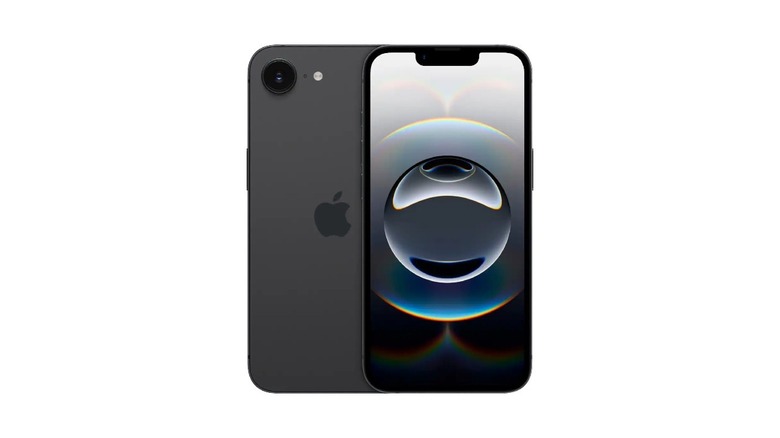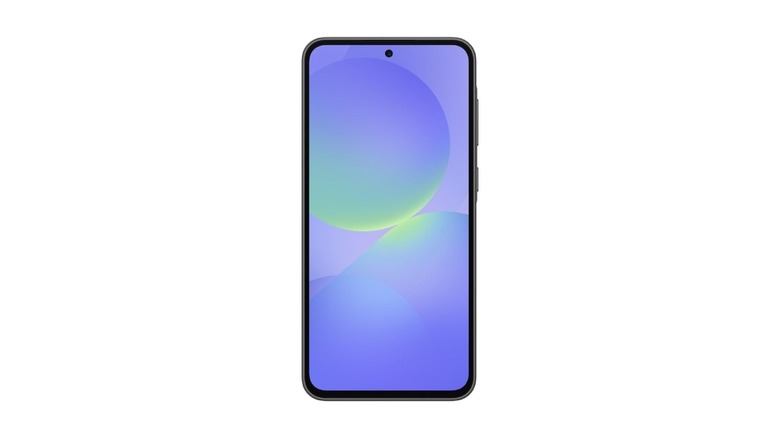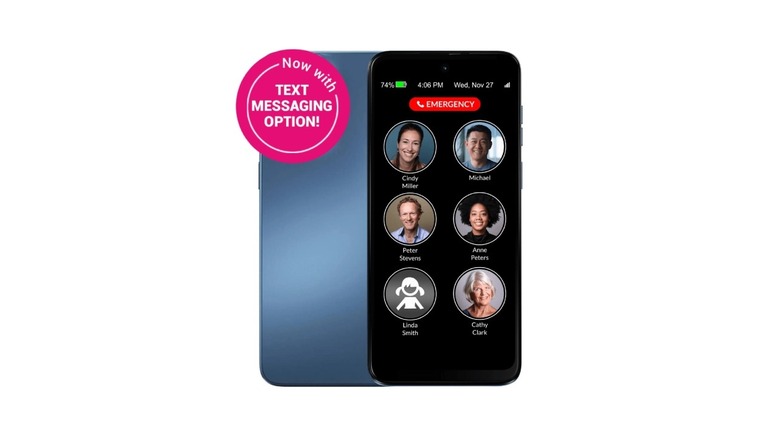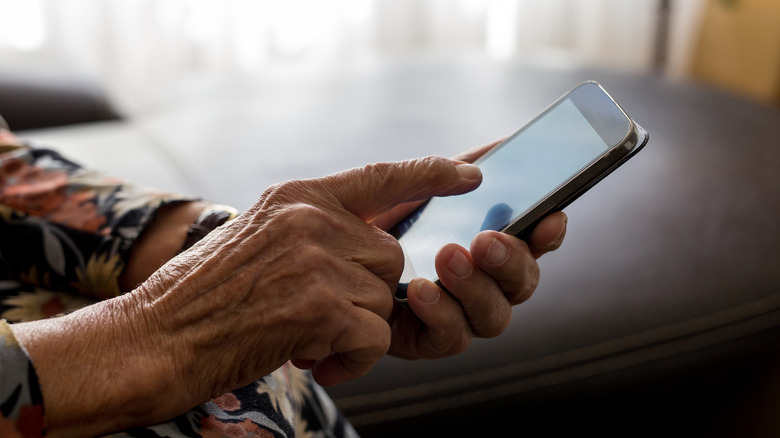These Are Some Of The Easiest Smartphones For Seniors To Learn How To Use (According To Users)
We may receive a commission on purchases made from links.
Smartphones have become such integral parts of our lives that we spend hours on them, texting or scrolling away on social media feeds. When buying a phone, most people consider key factors such as battery life, performance, camera quality, etc. However, when picking a phone for seniors, the key point of consideration is the ease of use. A smartphone that's easy to learn and use makes things a lot easier for seniors, as they don't have to spend time and effort learning the phone's different functions. A few factors contributing to better usability are larger icons, familiar interfaces, and easy unlocking methods. Some smartphones also have simple shortcuts right on the home screen to perform actions like making calls to specific contacts, launching favorite apps, etc.
Since most new smartphones have advanced features catered toward the youth and power users, it may not make sense to purchase those phones for seniors. The extra options may confuse some users, plus the heavy price tag may not be worth it for most people — especially since a lot of features may go unused. Owing to this, we've curated a list of the best smartphones for seniors that are easy to use and easy on your wallet. While some of these phones have been designed specifically for seniors, others have features that make them easy to adapt and use. We've relied on personal experience using these devices and on user reviews available on several online storefronts.
Lively Jitterbug Smart4
The Lively Jitterbug Smart4 is an Android smartphone with a customized UI designed for seniors. As soon as the phone is unlocked, the custom launcher has large icons accompanied by icon labels that clearly mention what each icon does. The icons are laid out in a tiled fashion to make it easier to view and identify them. You can make calls, send messages, open the camera, browse the web, and check emails — right from the home screen. Apart from these basic functions, features such as maps for navigating back home and an Urgent Response button that dials a favorite contact and sends them the device's current location are also present. Another feature we appreciate is how the UI only has Back and Home buttons at the bottom, making it easier to navigate through the interface — instead of the confusing usual gestures.
While the handset is manufactured by TCL, Lively's customized UI provides the software touches to make it suitable for seniors. As a result, the handset is locked to Lively's services. You cannot use a SIM from T-Mobile, AT&T, or any other carrier. This is one of the downsides of the Jitterbug Smart 4 since you cannot pay a one-time fee and use the smartphone as you wish. The initial cost of owning the phone is just $48, which is extremely affordable. However, the monthly plans start at a steep $20. However, if you want a no-frills phone for seniors, this is a good option.
Apple iPhone SE 3
There's a good chance that several seniors would be familiar with Apple's older design language when it comes to smartphones. Right from the first iPhone to the iPhone 8, every single iPhone has had the classic home button at the bottom of the screen. However, those phones are now too old to use. The latest iPhone you can buy with the home button is the iPhone SE 3. If you're getting a phone for your parents or someone who has used older iPhones back in the day, you cannot go wrong with the SE 3. The phone is easy to handle, thanks to its compact form factor. Moreover, it's easy to unlock the phone by simply resting one's finger on the home button.
The internals are solid, which means the iPhone SE 3 performs smoothly, even with the latest iOS 26 interface. The cameras are reliable, which can be important for those who take lots of pictures. The weak battery life is a downside of the iPhone SE 3, but it shouldn't be too big a problem for those who don't step out often. iOS is considered to be user-friendly, so most users should be able to get accustomed to the interface. It's also one of the cheapest iPhones you can buy that you can still use today, at just under $150. While the screen is small, the dual stereo speakers are excellent for watching media or alerting seniors about incoming calls and notifications.
Apple iPhone 16e
If you want a more modern iPhone without burning a hole in your pocket, the iPhone 16e is the way to go. This is the perfect candidate for those upgrading from an iPhone X, XR, XS, 11, or 12, since it retains a similar design language. While it does away with the home button in favor of an edge-to-edge display that uses gestures for navigation, you can simplify iOS for seniors and elders to make it more user-friendly. Larger icons, bolder text, and the customizable Action Button are features that can improve the experience massively for those of a certain age group. Notably, Apple's AirPods can also behave like hearing aids, for which you will need an iPhone. This is yet another excellent addition for seniors.
The iPhone 16e is also one of the most functional phones on this list in terms of performance, cameras, and battery life. For anyone who wants to click a lot of pictures of their children or grandkids, the iPhone 16e's camera is plenty capable. The front-facing shooter is also excellent for FaceTime calls with family. Another perk of getting an iPhone would be the ecosystem features, such as iMessage and AirDrop. They make it easy to communicate and share files with other family members. Thanks to the lightweight design, the iPhone 16e is easy to handle — even with a case on. If you have no budget constraints and are willing to put up with a small learning curve, you cannot go wrong with the iPhone 16e.
Samsung Galaxy A36
A big reason for recommending Samsung smartphones to seniors is the OneUI skin on top of Android. By default, the interface is user-friendly, has distinct icons that clearly signify what they do, and has ample customization options that let you change the size and shape of icons, the home screen layout, font type and size, etc. Then, there's the trump card for seniors — Easy Mode. This is an option built into OneUI that allows users to convert the phone's interface into an easy-to-use layout, which has large icons, clear icon labels, and shortcuts that are easy to launch. For instance, instead of the usual home screen with multiple small icons and widgets, the Easy mode has a tiled interface, where each tile can be assigned to a shortcut. This makes it easy to launch the Phone app, Messaging app, Camera app, etc.
While there are multiple Samsung phones with this feature, we recommend the Samsung Galaxy A36. It's reasonably priced, has a large screen that's also bright enough to be used outdoors, and a reliable camera setup that clicks good photos and is helpful for video calls. It also has an IP67 water resistance rating, which is handy if liquid spills on top of the phone. The battery life is reliable, performance is fast, and Samsung promises six years of software updates — which is great for ensuring the phone is secure against vulnerabilities, while getting the latest features.
RAZ Memory cell phone for seniors
Just like the Lively Jitterbug Smart4, the RAZ Memory cell phone has been designed specifically for seniors. It has an interface with large icons to launch apps and services. A feature that's quite cool is that, unlike most standard phones, where the Contacts list mentions people's names, the RAZ Memory phone displays all the contacts with their images. This makes it easy for seniors to pick who they want to call without squinting to read their names. Features such as video calls, text messages, visual reminders, and an emergency call button that dials 911 complete the package. The incoming call UI also displays a large image of the caller, along with huge buttons to accept or reject the call. RAZ Mobility has also done a commendable job by adding special modes for those who are visually impaired or experience tremors in their hands.
While both the hardware and software seem solid, there are a few downsides to the RAZ Memory phone. For starters, the phone doesn't have an app store, so you cannot download third-party apps to extend the phone's functionality. This means no Facebook, WhatsApp, Instagram, Gmail, etc. Moreover, the device is quite expensive for what it offers, especially considering the lack of an app store. You're essentially getting a feature phone for $349. That said, for super-seniors above a certain age, who only want to make calls quickly without too many taps, the RAZ Memory phone is a good option.
How we picked the phones
One of the primary factors for recommending these phones is reviews from real users who have used these devices over time. Notably, we've also used a few of these phones personally and verified that they have features or certain options that make the user experience easier to learn for seniors. Whether it's larger icons, bigger font sizes, or quick shortcuts to call emergency contacts, these phones are easy for the elderly to manage. While easy to use, it's vital that the phones don't compromise on basic functionality and essential features, such as a front-facing camera for video calls, text messaging, a speaker that's loud enough, support for third-party apps to perform specific functions, etc. Most phones on this list have an app store where one can download millions of apps.
Lastly, we've ensured that all the phones included herein are available at reasonable prices. This way, even if the phone is dropped repeatedly or gets damaged, replacing it wouldn't hurt much. Depending on the use case and the requirements, you can pick from any of these options for your parents, grandparents, senior friends, or even yourself — and you will definitely be pleased with what they have to offer.

